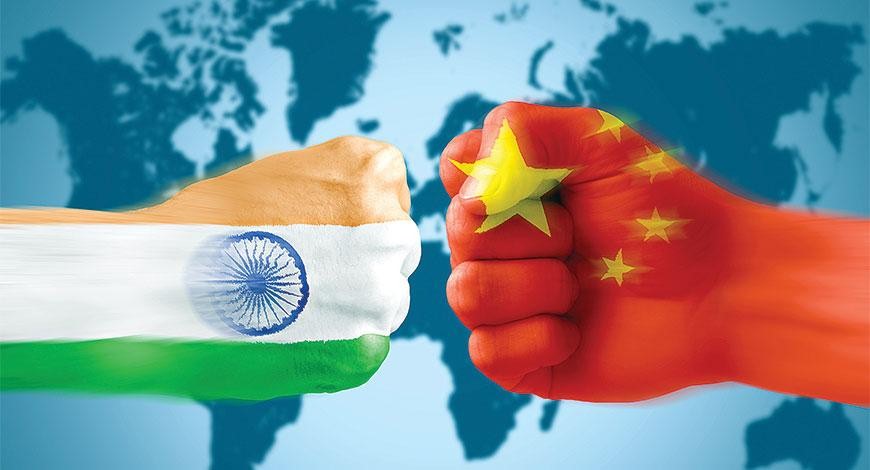Raj Trikkha, Research Intern, ICS

Source: Businessworld
China has been dominating the world in e-commerce since 2013, when it overtook the US to become the world’s largest market. Ever since the growth in this sector has been on a double-digit spree. According to a report by eMarketer, the revenue accrued to Chinese companies from their e-commerce sector in 2020 stood at 2296.95 billion dollars, almost triple that of the US.
Now, the first question that pops in our head is, ‘Is it because of the huge population of China?’. If it were so, then India, which has a population almost equal to China’s, should also be topping the list or at least be close to topping the list, which it is not. Hence the more important question arises, ‘What holds back India from leading the world in the e-commerce sector?’.
Several factors, like demographics and consumer trust, might be taken into consideration while answering the question. To narrow down our focus, we will only look into the government policies and regulations of the two countries and compare their effectiveness. The policies will pertain to two domains, namely, internet development and domestic e-commerce.

China embraced the internet in 1994, and quickly realizing its importance, began developing the internet sector at an incredible speed. While only 6000 computers and 40,000 users were connected to the internet in 1995, by mid-2001, 10.2 million computers and 26.5 million users were online. The credit for this achievement goes to the initiative taken by China’s government in the promotion of the internet. They launched 13 “Golden Projects” in order to build the information infrastructure of the country and developed their internet in three phases – Asteroids (1996-2003), Bees (2004-2010), Coliseums (2010-present). Along with this, the Chinese also focused on growing their technological infrastructure which led to an expansion of telephone networks, PC manufacturing, and internet awareness.
While the internet came to India in 1986, much before China, it could not climb the stairs of development as quickly. Its first action towards internet development, the IT Action Plan 1998, was several years after the introduction of the internet. It also eventually laid down new laws, the IT Act 2000, to deal with cybercrime and e-commerce. While India was still formulating policies and laws, China worked on building infrastructure for e-commerce under the Golden Projects. The strategy followed by India was thought to be better in the long run, while China’s strategy paid off instantly. It is 2021, and the anticipated success from India’s long-term strategy is yet to be gained, as China enjoys an internet penetration of 70.4%, while India is only at 45%.
The vast differences in their approaches to regulating the market affected the market and its players to a large extent and thus, became an essential factor in determining the growth of the market.

Source: eMarketer
For instance, China’s e-commerce policies aim at strengthening the construction of an e-commerce credit system that includes the credit information of all stakeholders. The government monitors companies with poor credit ratings, which helps avoid counterfeiting and other malpractices. Along with this, the government ensures that all e-commerce enterprises operate in accordance with information security protection regulations and technical standards. To increase security, the government has promoted the use of digital certificates and their verification among electronic certification authorities. Of course, it might be argued that such progress has occurred at the cost of citizens’ privacy.
China has promoted tax and financial incentive programs for high-tech SMEs by replacing business tax with a value-added tax and nurturing a multi-channel financing mechanism to support e-commerce companies. The government also motivates banks and other financial bodies to launch security over intangible assets, real estate pledges, and other financing services for e-commerce SMEs. This makes it easier for SMEs to raise finance, as Intangible Asset–Based Lending leverages a portfolio of Intellectual Property or other intangible assets to secure a loan. It also guides investment funds to strengthen support for E-commerce startups.

The Indian government, on the other hand, is working towards integrating traditionally offline markets, like vegetable markets, into digital e-commerce platforms. The government has also launched flagship initiatives like Digital India, Make in India, Start-up India, and Skill India, which are responsible for the growth of the sector.
Although India is making considerable efforts in developing its e-commerce market, there are many areas with scope for improvement. Integration of stakeholders is a key shortcoming. Government stakeholders like policymakers, taxation authorities, and the Registrar of Companies should be woven into a single system to increase efficiency and transparency for the players in the Indian e-commerce market. The absence of a centralized mechanism to provide rating or accreditation to the numerous e-commerce sites adds up to the inefficiency. This makes it difficult for people to trust such websites. If a standardized procedure for the same is developed, it will positively impact the quality of online services.
On comparing the policy approaches of the two countries, it is evident why China holds 53.64% (as of 2020) of the global e-commerce market, and India is at 1.29%. It is also clear that a large population by itself cannot translate into a thriving e-commerce market in the absence of supportive policy. Hence a more careful dissection of China’s experience can be instrumental in realizing the full potential of the Indian e-commerce market.